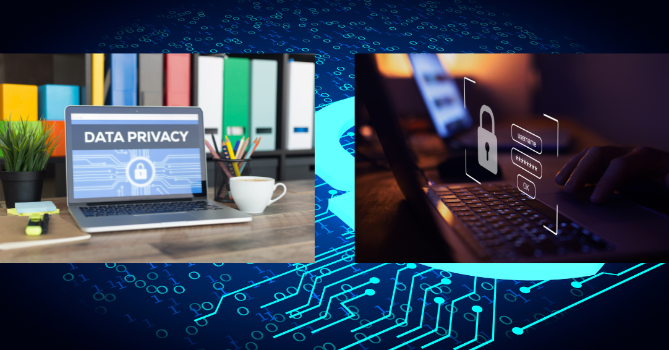.png)
The Ethics of BIM: Data Privacy and Intellectual Property Concerns
Introduction
Building Information Modeling (BIM) is transforming the construction industry. It helps architects, engineers, and builders work together on projects more efficiently by creating detailed 3D models. As BIM becomes more common, ethical concerns are starting to rise. These concerns mainly focus on data privacy and intellectual property.
With so much data being shared through BIM, protecting sensitive information is becoming a critical issue. Companies need to ensure that the data they share is safe from unauthorized access. At the same time, the question of who owns the data in these models remains unclear, leading to disputes over intellectual property rights.
This blog will explore these ethical challenges in BIM. We’ll take a closer look at the risks involved in data sharing and ownership, and offer insights on how to navigate these concerns in a rapidly changing digital world.
The Rise of BIM and Its Ethical Implications
BIM technology has rapidly grown in popularity within the construction industry. Its ability to streamline collaboration and improve efficiency has made it a valuable tool for architects, engineers, and contractors. By creating a shared 3D model of a building, BIM allows all stakeholders to work together more effectively, reducing errors and saving time.

However, this increase in collaboration also brings up important ethical concerns. One of the biggest questions revolves around data ownership. When multiple parties contribute to a BIM model, who actually owns the data? Is it the architect who designed the building, the contractor who builds it, or the client who commissioned the project? This lack of clarity can lead to disputes and confusion.
Additionally, sharing large amounts of data raises privacy concerns. With so many stakeholders accessing the same model, protecting sensitive information becomes a challenge. Ensuring that only authorized individuals have access to critical project details is essential for maintaining data security.
Data Privacy Concerns in BIM
Data privacy is a growing concern in BIM because these models contain highly detailed architectural and construction plans. These plans often include sensitive information, such as building layouts, security systems, and even personal details of the property owners. If this data falls into the wrong hands, it could be misused, leading to serious security risks.
One of the main risks is unauthorized access. With so many people working on a single BIM model, it’s essential to control who can view and edit the data. Without proper safeguards, cyber threats like hacking and data breaches become more likely. Hackers could steal sensitive information, use it for malicious purposes, or even hold the data ransom.
In addition to external threats, there is the risk of internal misuse. Team members with unnecessary access to BIM models might accidentally or deliberately share confidential information. This can result in data being exposed to competitors or unauthorized individuals.

To address these concerns, companies must take strong measures to protect BIM data. Encryption is one effective method, ensuring that only authorized users can access and read the data. Additionally, implementing controlled access systems can limit who can view or edit certain parts of the BIM model. By assigning different levels of access based on a person’s role, companies can prevent unnecessary exposure of sensitive data.
Training employees on data privacy best practices is another key step. When everyone involved understands the importance of protecting the information in BIM models, the risk of accidental data breaches decreases.
By taking these precautions, companies can better safeguard the valuable data within their BIM models and reduce the risk of privacy violations.
Intellectual Property and Ownership in BIM
Intellectual property (IP) rights in BIM are complicated due to the collaborative nature of these models. In a BIM project, multiple parties contribute to the design, including architects, engineers, contractors, and clients. This raises a key question: who actually owns the data? Is it the designer who creates the model, the contractor who adds construction details, or the client who commissions the project? The lack of clear ownership can lead to disputes and confusion.

There’s also a risk of intellectual property theft. Because BIM models contain valuable design information, they are vulnerable to being copied or used without permission. If this data falls into the wrong hands, companies risk losing control over their creative work and competitive advantage.
To safeguard intellectual property, companies should establish clear agreements on data ownership at the start of a project. Licensing agreements can help define how BIM models are used and shared, ensuring that each party’s rights are respected. Additionally, companies can protect their designs by using watermarks or other forms of digital rights management (DRM).
By addressing these legal and IP concerns early, companies can protect their work and avoid potential conflicts down the road.
The Role of AI and Automation in BIM Ethics
AI and automation are becoming increasingly common in BIM, bringing new ethical challenges. AI-powered tools in BIM can analyze large amounts of data quickly, helping teams make decisions faster and more efficiently. However, these tools also raise questions about the ethics of automated decision-making. When AI is used to make choices about design, construction methods, or materials, it’s important to ensure that those decisions are fair and transparent.

One key concern is the lack of transparency in how AI systems process data. If project stakeholders don’t fully understand how AI tools are reaching certain conclusions, it can lead to mistrust. Ethical practices in BIM require that AI tools are used in a way that everyone understands and agrees upon.
There’s also the risk that AI could unintentionally exploit data. Without proper controls, AI might use sensitive or proprietary information in ways that compromise privacy or ownership rights. This could include exposing private details or misusing intellectual property.
To maintain ethical standards, companies need to be transparent about how they use AI and establish safeguards that protect both data and decision-making processes.
Best Practices for Ethical BIM Implementation
To ensure ethical use of BIM, companies need to establish clear policies around data privacy and intellectual property. This begins with creating strong data handling and security guidelines. These policies should define how BIM data is stored, accessed, and shared, reducing the risk of breaches or unauthorized use.
Contracts are essential in clarifying data ownership. Every stakeholder involved in a BIM project should know who owns the data and how it can be used. These agreements can help avoid conflicts over intellectual property rights down the line.

Training is another critical element. Teams should be educated on ethical concerns related to BIM, such as data privacy, ownership, and the use of AI. When employees are aware of these issues, they are better equipped to handle sensitive information responsibly and prevent ethical missteps.
By following these practices, companies can implement BIM in an ethical, secure way.
Conclusion
As BIM continues to transform the construction industry, ethical considerations around data privacy and intellectual property are more important than ever. Companies must address these concerns by implementing clear policies, securing data, and safeguarding intellectual property. By adopting a proactive approach, businesses can protect both their projects and clients from potential risks. Ensuring transparency in the use of AI and properly managing data are key to building trust and maintaining ethical practices. Now is the time for construction companies to stay ahead by tackling these ethical challenges head-on.